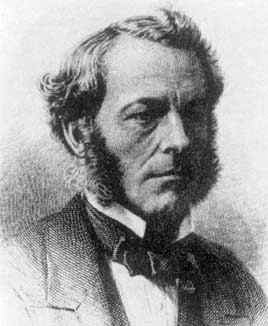Lecture 22
Stokes' Theorem
APMA E2000
Drew Youngren dcy2@columbia.edu
Announcements
- HW B due Tuesday
-
Quiz 6 next Thursday
- Surface & Flux Integrals
1-minute review
Definition
A flux integral of a vector field $\vec F$ through a surface $\Omega$ (somethimes just the "surface integral of a vector field") with orientation $\vec N$ corresponding to parametrization $\vec r:\mathcal D \to \RR^3$ is
\[\iint_\Omega \vec F\cdot d\vec S = \iint_\Omega \vec F \cdot \vec N\,dS \]
\[ = \iint\limits_D \vec F(\vec r(u,v))\cdot (\vec r_u \times \vec r_v) \,du\,dv \]
Example
Find the flux of the vector field $z\,\vec k$ through the piece of the cone $z=\sqrt{x^2 + y^2}$ below $z=2$, oriented upward.
Solution. \[ \vec r(u,v) = \langle u \cos v, u \sin v, u \rangle \qquad 0 \leq u \leq 2, 0 \leq v \leq 2 \pi \]
\[\vec r_u \times \vec r_v = \langle -u \cos v, -u \sin v, u \rangle \]
\[ \iint_{\mathcal C} \vec F\cdot d\vec S = \int_0^{2\pi} \int_{0}^{2} u^2\,du\,dv = \frac{16\pi}{3} \]
Div & Curl
"Del"
Consider a "vector" of operators \[ \nabla = \frac{\partial}{\partial x} \,\vec i + \frac{\partial}{\partial y} \,\vec j + \frac{\partial}{\partial z} \,\vec k \]
Let's ignore that $\nabla$ is not a vector and use it with vector operations anyway:
Scalar Multiplication
Let $f(x,y,z)$ be a scalar field. Then "vector times scalar is vector" becomes
\[ \nabla f = \frac{\partial f}{\partial x} \,\vec i + \frac{\partial f}{\partial y} \,\vec j + \frac{\partial f}{\partial z} \,\vec k \]
aka the gradient
Dot Product
Let $ \vec F(x,y,z) = P(x,y,z)\,\vec i + Q(x,y,z)\,\vec j + R(x,y,z)\,\vec k$ be a vector field. Then "vector dot vector is scalar" becomes
\[ \nabla \cdot \vec F = \frac{\partial P}{\partial x} + \frac{\partial Q}{\partial y} + \frac{\partial R}{\partial z} \]
aka the divergence.
Cross Product
Let $ \vec F(x,y,z) = P(x,y,z)\,\vec i + Q(x,y,z)\,\vec j + R(x,y,z)\,\vec k$ be a vector field. Then "vector cross vector is vector" becomes
\[ \nabla \times \vec F = \begin{vmatrix} \vec i & \vec j & \vec k \\ \frac{\partial }{\partial x} & \frac{\partial }{\partial y} & \frac{\partial }{\partial z} \\ P & Q & R \end{vmatrix} \]
\[ = \left( \frac{\partial R}{\partial y} - \frac{\partial Q}{\partial z} \right) \,\vec i + \left( \frac{\partial P}{\partial z} - \frac{\partial R}{\partial x} \right)\,\vec j + \left( \frac{\partial Q}{\partial x} - \frac{\partial P}{\partial y} \right)\,\vec k \]
aka the curl. The curl measures the spin or rotation of a vector field. It is a vector with the direction giving the axis of rotation and the magnitude indicating the strength of the rotation (as indicated by the right hand rule).
Examples
Compute the curl of $\vec F(x,y,z) = -y \vec i + x z\,\vec j - \frac{z}{10}\,\vec k$ \[ \nabla \times \vec F = -x\,\vec i + (z + 1)\,\vec k\]
Compute the divergence of both $\vec F$ and its curl. \[ \nabla \cdot \vec F = - \frac{1}{10} \qquad \qquad \qquad \nabla \cdot \nabla \times \vec F = -1 + 1 = 0.\]
Stokes' Theorem
Stokes' Theorem
Objectives
- orient a surface and its boundary
- see a brief justification
- recognize when it applies
Orienting a Boundary
If $\mathbf \Sigma$ is a parametric surface oriented with normal $\mathbf N$, its boundary $\partial \Sigma$ is positively-oriented if when traversed standing with $\mathbf N$ up, the surface is on the left.
Here is a visualization with a piece of the sphere oriented outward.
Stokes' Theorem
Let $\Omega$ be an oriented surface in $\RR^3$ and $\partial \Omega$ its positively-oriented boundary. If $\vec F(x,y,z)$ is a smooth vector field, then \[ \iint_{\Omega} \nabla \times\vec F \cdot d \vec S = \oint_{\partial \Omega} \vec F\cdot d \vec r \]
Faraday's Law
Example
Compute the flux of $\mathbf F(x,y,z) = -z\,\mathbf i$ upward through the piece of the plane $z - x = 1$ inside the cylinder $x^2 + y^2 = 1$.
Hint: $\nabla \times \langle 0, 0, - yz \rangle$
Solution. Compute the line integral $\int_{\partial \mathcal \Omega} (-yz)\,dz$
$\vec r(t) = \langle \cos t, \sin t, 1 + \cos t \rangle$ matches the orientation. \[\int_0^{2\pi} -(\sin t)(1 + \cos t)(-\sin t)\,dt = \int_0^{2\pi} \sin^2 t\,dt \]
\[ = \pi \]
Example
Compute the line integral $\oint\limits_{\partial \Omega} \vec F\cdot d\vec r $ around the ccw-oriented boundary of $\Omega$ given by \[z = (1 - x^2)(1-y^2)\] for $-1 \leq x \leq 1, -1 \leq y \leq 1$ and \[\vec F(x,y,z) = \frac y2\,\vec i + \frac{z}{3}\, \vec j + x\, \vec k.\]
I call this surface the raviolo.
Solution. The secret is, per Stokes', we can use any surface $\Omega'$ with the same boundary $\partial \Omega' = \partial \Omega$. Easiest is $z=0$ with same footprint. The normal vector is constant $\mathbf N = \mathbf k$. $\nabla \times \mathbf F = \langle -\frac13, -1, -\frac12\rangle$ so
\[ \oint_{\partial \Omega} \mathbf F\cdot d\mathbf r = \iint_{\Omega'} (-\frac13\mathbf i - \mathbf j - \frac12\mathbf k) \cdot \mathbf k\, dS \]
\[ = -\frac{\text{Area}(\Omega')}{2} = -2. \]
Example
A hose connects two ports, unit circles in the $xz$-plane centered at $x = \pm 2, z = 0$. Find the flux out of the hose of the curl of the vector field \[ \vec F(x,y,z) = z\,\vec i - (xy + z/2)\,\vec j - z \vec k. \]
Example
Compute the line integral $\oint_{\partial D} \vec F \cdot d\vec r$ around the ccw (from above) boundary of the surface $D$. \[ \vec F(x,y,z) = xyz \,\vec i + y \,\vec j + z \,\vec k \] where $D$ is the portion of the surface $z=x^2$ above $x^2 + y^2 \leq a^2$ in the first octant.
Learning Outcomes
You should be able to...
- Combine the "del" operations where well-defined and establish which yield zero.
- Determine if a boundary curve is oriented positively relative to an oriented surface and vice versa.
- State Stokes' Theorem and identify its necessary components.
- Verify both sides of the equality in Stokes' in basic examples.
